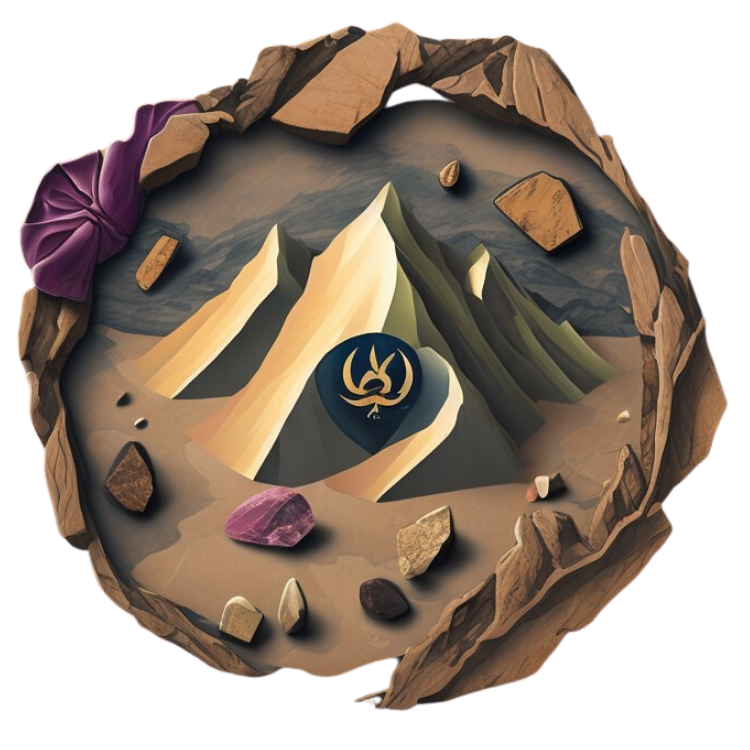Where to Find Gold in the U.S.: Ultimate Guide for Prospectors
Click here to see our crystal hunting maps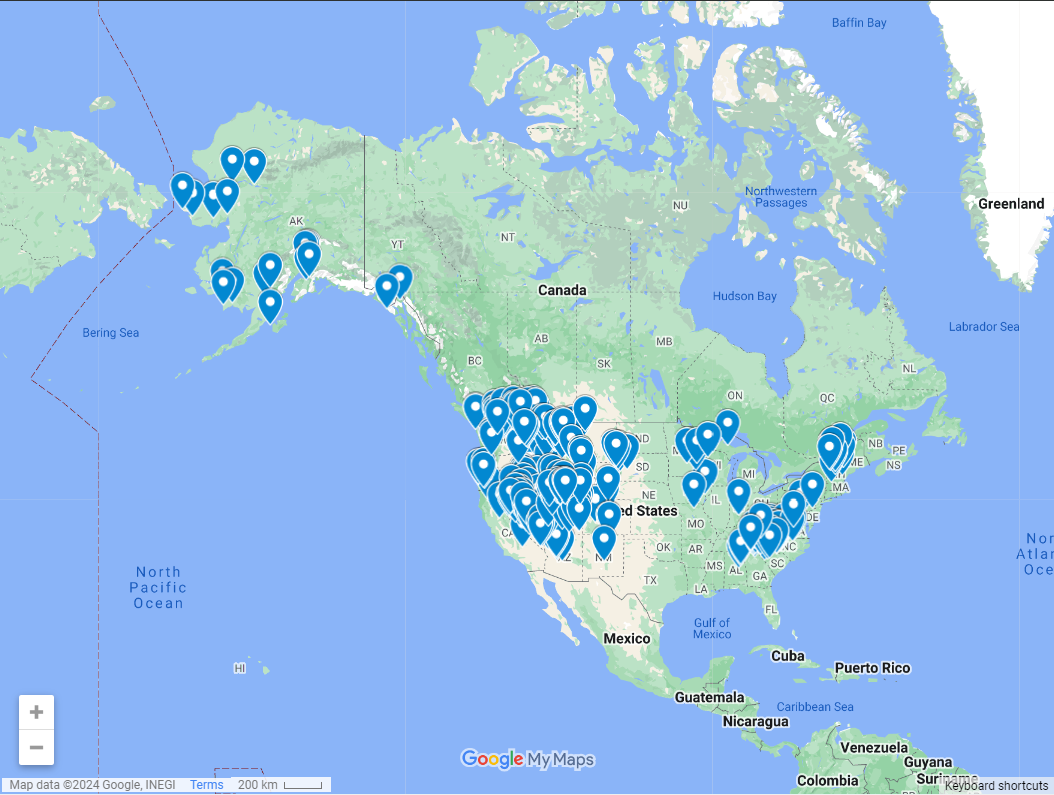
Gold prospecting has been a significant activity for centuries, dating back to ancient civilizations. From the pharaohs of Egypt adorning their tombs with gold artifacts to the California Gold Rush of 1848 which attracted thousands of prospectors and marked the beginning of a large-scale gold mining industry in the U.S. Today, gold prospecting remains a vibrant activity especially here in the United States, offering both recreational enjoyment and the potential for valuable discoveries.
In this article, we will be looking at the top places where you can find gold in the U.S. and what you need to know before heading out on your next prospecting adventure. But before we do all of that, let's start with the basics.
Types of Gold Deposits
Gold deposits are broadly classified into two categories: lode gold and placer gold.
1. Lode Gold:
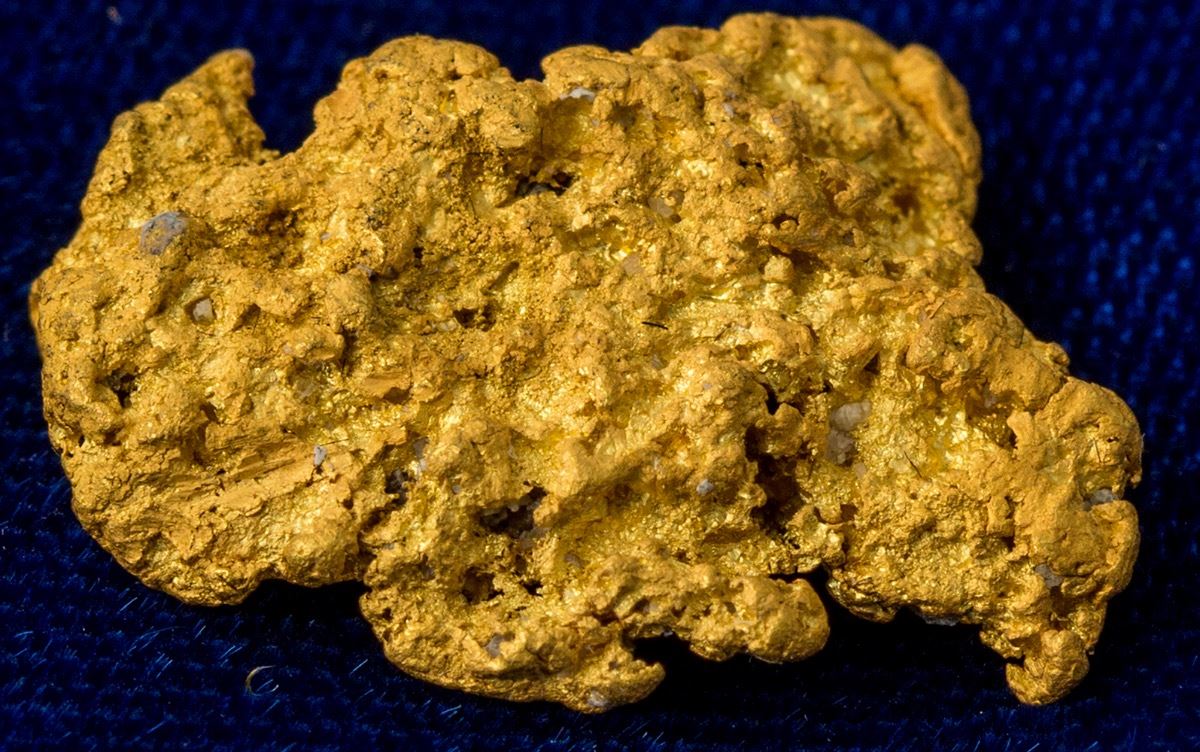
These are primary deposits where gold is found in veins of quartz or other rock formations. Lode gold is usually extracted through hard rock mining techniques, which involve drilling and blasting to access the ore.
2. Placer Gold:
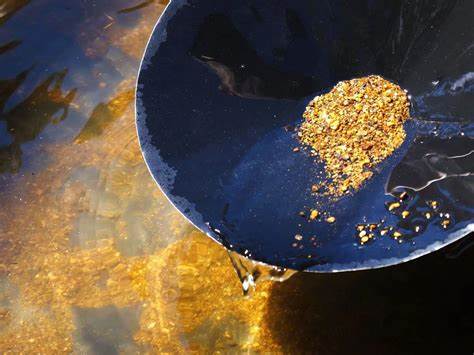
These are secondary deposits formed from the weathering and erosion of lode gold deposits. Placer gold is found in riverbeds, streams, and other sedimentary environments, often in the form of nuggets, flakes, or fine gold dust. Placer gold prospecting methods include panning, sluicing, and dredging.
Popular Gold Prospecting Locations in the U.S.
The United States is rich in gold prospecting history and offers numerous locations where enthusiasts can try their luck. Here are some of the most popular gold prospecting destinations:
Zoom this image to find a gold site near you
This map shows where to find gold across the United States.
Gold Mining in California
California is synonymous with gold prospecting, thanks to the historic Gold Rush. Notable locations include:
- Sierra Nevada Mountains: Known for both lode and placer gold, this area remains a popular prospecting site.
- American River: This river was at the heart of the Gold Rush, and recreational panning is still allowed.
- Rogue River: Famous for its placer gold deposits, it attracts many prospectors.
Gold Mining in Alaska
Alaska offers vast, untapped potential for gold prospectors:
- Nome: Known for beach placers, where gold can be found along the shorelines.
- Fairbanks: This region has produced significant amounts of placer gold.
- Klondike Goldfields: Located near the Yukon border, it was the site of another historic gold rush.
Gold Mining in Colorado
Colorado boasts numerous locations with rich gold deposits:
- Cripple Creek: Known for its lode gold, this area has numerous mines and active claims.
- South Platte River: Offers good opportunities for placer gold prospecting.
- Clear Creek: Popular for recreational gold panning.
Gold Mining in Nevada
Nevada is renowned for its rich lode gold deposits:
- Comstock Lode: A historic site known for its significant gold and silver production.
- Carlin Trend: One of the richest gold mining districts in the U.S.
Popular Gold Prospecting Locations Globally
Gold Mining in the Yukon
The Yukon Territory in Canada is famous for its Klondike Gold Rush:
- Klondike River: Still rich in placer gold deposits and attracts many prospectors.
- Dawson City: The epicenter of the Klondike Gold Rush, offering guided gold panning tours.
Gold Mining in British Columbia
British Columbia is another Canadian province with significant gold deposits:
- Fraser River: Known for its placer gold, it's a popular spot for panning.
- Cariboo Goldfields: Historic gold rush area with active claims and panning opportunities.
Gold Mining in Brazil
Brazil is one of South America's top gold-producing countries:
- Minas Gerais: Rich in lode gold deposits, home to many active mines.
- Tapajós Basin: Known for its extensive placer gold deposits.
Gold Mining in Peru
Peru is a major gold producer with numerous mining sites:
- Madre de Dios: Famous for its placer gold deposits in the Amazon basin.
- Cajamarca: Home to one of the largest gold mines in the world.
Gold Mining in Australia
Australia is known for its significant gold resources:
- Kalgoorlie: Site of the famous Super Pit, a large open-cut gold mine.
- Ballarat: Historic gold rush town with many recreational prospecting opportunities.
Gold Mining in South Africa
South Africa has some of the deepest and richest gold mines globally:
- Witwatersrand Basin: Known for its vast lode gold deposits.
- Barberton Greenstone Belt: Another significant gold-producing region.
Gold Mining in Ghana
Ghana is Africa's second-largest gold producer:
- Ashanti Belt: Home to many large-scale gold mining operations.
- Tarkwa: Known for its extensive placer gold deposits.
Gold Mining in China
China is the world's largest gold producer:
- Shandong Province: Known for its large-scale gold mines.
- Henan Province: Significant for both lode and placer gold deposits.
Gold Mining in Indonesia
Indonesia has rich gold mining potential:
- Grasberg Mine: One of the largest gold mines in the world.
- Pongkor Mine: Known for its underground mining operations.
Gold Mining in Finland
Finland is a rising star in the gold mining industry:
- Kittilä Mine: One of Europe's largest gold mines.
- Orivesi Mine: Known for its high-grade lode gold deposits.
Gold Mining in Russia
Russia has vast gold resources:
- Siberia: Rich in placer and lode gold deposits.
- Kolyma: Known for its historical gold production.
How to Find Gold: Geological Indicators of Gold
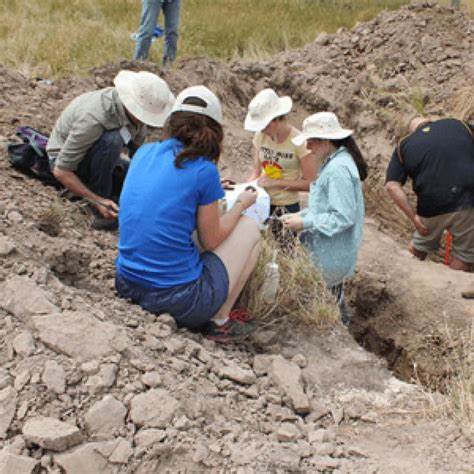
Understanding the geological indicators of gold can significantly enhance your prospecting success. Key indicators include:
Rocks Associated with Gold
Gold is often found in association with specific types of rocks, such as:
- Quartz: Gold is frequently found in quartz veins.
- Basalt: Some placer gold deposits are found in areas with basalt formations.
- Granite: Lode gold deposits are often associated with granite intrusions.
Minerals Associated with Gold
Certain minerals can indicate the presence of gold:
- Pyrite (Fool's Gold): Often found in the same areas as gold.
- Chalcopyrite: Can be a gold indicator in some regions.
- Magnetite: Sometimes associated with placer gold deposits.
Gold-Bearing Landscapes
Certain landscapes are more likely to contain gold:
- Alluvial Plains: Ideal for placer gold deposits.
- Mountain Ranges: Common sites for lode gold deposits.
- Riverbeds and Streams: Prime locations for placer gold prospecting.
- Iron Staining: Rusty-colored iron stains can indicate the presence of gold-bearing minerals.
- Black Sands: Placer gold often accumulates with black sands, which are composed of heavy minerals like magnetite and hematite.
Tools and Equipment for Gold Prospecting
Coming Soon: Our Recommended Gold Prospecting Tools Chart.
Tips for Successful Gold Prospecting
Research and Planning
- Historical Research: Study historical gold rushes and mining records to identify potential locations.
- Topographical Maps: Use maps to locate rivers, streams, and other gold-bearing landscapes.
Site Selection
- Sampling: Take multiple samples from different locations to determine the best prospecting site.
- Access: Ensure the site is accessible and legal for prospecting.
Prospecting Techniques
- Panning Technique: Practice proper panning techniques to maximize gold recovery.
- Sluicing Setup: Set up your sluice box at the correct angle and water flow for optimal gold capture.
Environmental Considerations
- Respect Nature: Minimize your impact on the environment and follow Leave No Trace principles.
- Clean Up: Always clean up after yourself and remove any trash or equipment.
See more detailed tips for prospecting in different locations
Regulations and Legal Considerations
Gold Prospecting Permits and Licenses
- Federal Lands: Obtain the necessary permits for prospecting on federal lands.
- State Lands: Check state-specific regulations and obtain the required licenses.
Public Land Gold Prospecting
- BLM Lands: The Bureau of Land Management Lands often allows recreational prospecting with proper permits.
- National Forests: Some national forests permit gold panning and sluicing in designated areas.
Private Land Gold Prospecting
- Landowner Permission: Always obtain permission from landowners before prospecting on private property.
- Claim Staking: Consider staking a claim if you find a promising site on public land.
Gold Prospecting Claims
- Locating Claims: Research and locate available claims through online databases and local offices.
- Filing Claims: Follow the legal procedures to file and maintain a mining claim.
Gold Prospecting Clubs and Associations
Joining a gold prospecting club or association can be an invaluable resource for both novice and experienced prospectors. These organizations offer a variety of benefits, including access to exclusive claims, educational resources, and a community of like-minded individuals.
Benefits of Joining a Gold Prospecting Club
- Access to Claims: Many clubs have agreements with landowners or have staked claims that are exclusively available to their members.
- Educational Resources: Clubs often provide training sessions, workshops, and seminars on various prospecting techniques, geological identification, and equipment use.
- Networking Opportunities: Being part of a club allows you to connect with other prospectors, share experiences, and learn from seasoned experts.
- Support and Mentorship: Experienced club members often offer mentorship to newcomers.
- Group Outings and Events: Clubs frequently organize group outings, field trips, and events where members can prospect together.
- Discounts and Deals: Membership can sometimes provide discounts on equipment, supplies, and services from affiliated businesses.
Notable Gold Prospecting Clubs and Associations in the U.S.
- Gold Prospectors Association of America (GPAA): The GPAA is one of the largest and most well-known gold prospecting organizations in the U.S.
- New 49'ers Prospecting Club: Based in Happy Camp, California, offering access to extensive gold claims along the Klamath River.
- Arizona Association of Gold Prospectors (AAGP): Focused on providing access to gold prospecting opportunities in Arizona.
- Lost Dutchman's Mining Association (LDMA): An elite branch of the GPAA offering exclusive membership benefits and access to private gold mining properties.
Click here to see a more detailed list of gold prospecting clubs in the U.S.
How to Choose the Right Club for You
When selecting a gold prospecting club or association, consider the following factors:
- Location: Choose a club with claims and activities in regions you are interested in prospecting.
- Membership Fees: Review the cost of membership and what is included.
- Community and Support: Look for a club that provides a supportive community and opportunities for mentorship and learning.
- Activities and Events: Consider clubs that organize regular outings, events, and educational workshops.
- Reputation and Reviews: Research the club's reputation and read reviews from current and past members.
Conclusion
Gold prospecting is a rewarding and exciting activity that offers a glimpse into history and the opportunity to find valuable gold deposits. Whether you're a seasoned prospector or a novice, understanding the types of gold deposits, popular locations, geological indicators, and necessary equipment will enhance your chances of success. Always research and follow regulations, practice ethical prospecting, and prioritize safety. With dedication and the right knowledge, you can embark on a successful gold prospecting adventure in the U.S. or around the world. Happy prospecting!
